Non-instructional spaces such as cafeterias, hallways, common areas, courtyards, and other outdoor areas are critical components in how a school functions—and they should not just be afterthoughts when designing school buildings.
With careful planning, schools can make effective use of these communal spaces to help create the right school culture and even support learning beyond the classroom. In fact, the pandemic has proven the value of these spaces in supporting high-quality teaching and learning.
As schools have tried to spread students out to maintain safe social distancing, many have taken advantage of cafeterias, common spaces, and outdoor areas to create additional learning spaces. K-12 leaders have found this process much easier with non-instructional spaces that are intentionally designed to serve many functions—such as empowering students to engage in continuous learning.
Smart Design Elements
When designing and equipping non-instructional spaces that can inspire learning, here are four core principles to keep in mind.
Versatility
For schools to get the most value out of non-instructional spaces, these should be multipurpose spaces that can support many different kinds of activities. For instance, can your cafeteria double as a study center or a lounge area when meals aren’t being served? Can a hallway serve as a place for students to relax and recharge their devices between classes?
Versatility also means being able to support a variety of group sizes. Some students might want to sit and read by themselves, while others might want to talk or work together in pairs or small groups.
Equipping cafeterias, common areas, and other non-instructional spaces with a variety of furniture types allows for many uses. Choosing agile, modular furniture that can be configured in multiple ways makes it simple to convert spaces from one use to another, or to create flexible groupings of different sizes.
Comfort
If students are going to reflect on what they’ve learned or continue a discussion that began in class, they need comfortable and easily accessible places to sit down and talk, read, study, or look up information. These spaces—which can be hallways, large common areas, or even outdoor spaces—should be furnished with comfortable, appealing seating that draws students to the space and encourages them to stay and talk or do work between classes or after school.
Using soft lounge seating or café-style tables and chairs can make these areas comfortable, highly engaging places where students enjoy spending time.
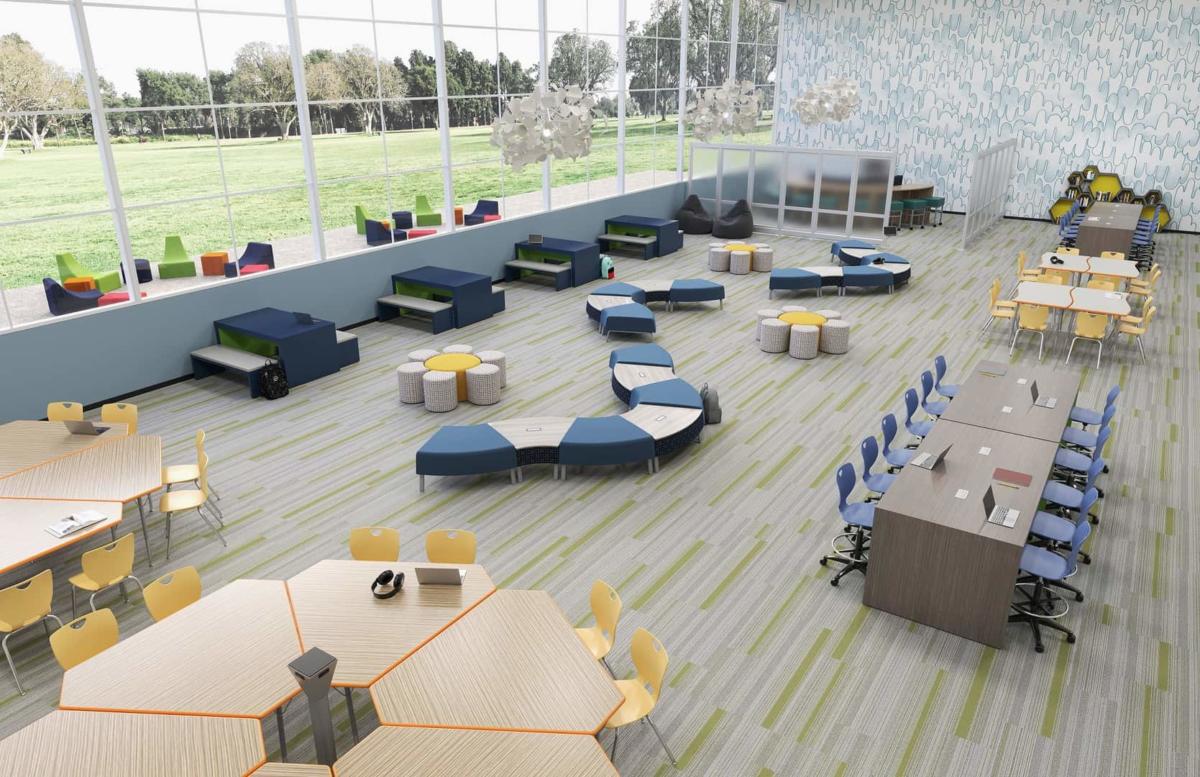
Functionality
For anytime, anywhere learning to become a reality, students need tools and materials to support continuous learning throughout the school. These might be high-tech tools such as laptops, tablets, and interactive displays, or even just low-tech tools such as whiteboards or easy writing surfaces to brainstorm and share ideas.
While digital devices bring an entire world of information to students’ fingertips, enabling students to learn from wherever they are, a dead battery can quickly disrupt digital learning. For non-instructional spaces to support continuous learning effectively, think about how these spaces will meet students’ power needs with strategically placed electrical outlets—such as outlets embedded in tabletops, chairs, and other furniture.
Consider supplying built-in USB ports for connecting peripheral devices as well, and make sure there is ubiquitous Wi-Fi coverage anywhere students might gather to learn or study.
Stimulation
Students are most likely to use non-instructional spaces as extensions of the classroom if they feel inspired to continue their learning. Schools can help foster a culture of continuous learning by making informal learning spaces intellectually engaging and stimulating.
For example, use furnishings, artwork, decorations, and age-appropriate tools that inspire curiosity in hallways and other common areas. Objects such as maps, sculptures, inventions, shelves of books, posters, interactive displays, inspiring quotes, dioramas, and examples of student work can encourage students to continually think, reflect, and explore.
Creativity in space design can inspire creative thinking among students.
Modern School Cafeterias: 4 Great Ideas
The modern school cafeteria draws inspiration from cafes, food courts, and other spaces that students like to hang out in after school. “It’s recreating that coffee shop vibe in the school in order to draw students in,” says Ofelia Gonzalez, an interior designer for School Specialty.
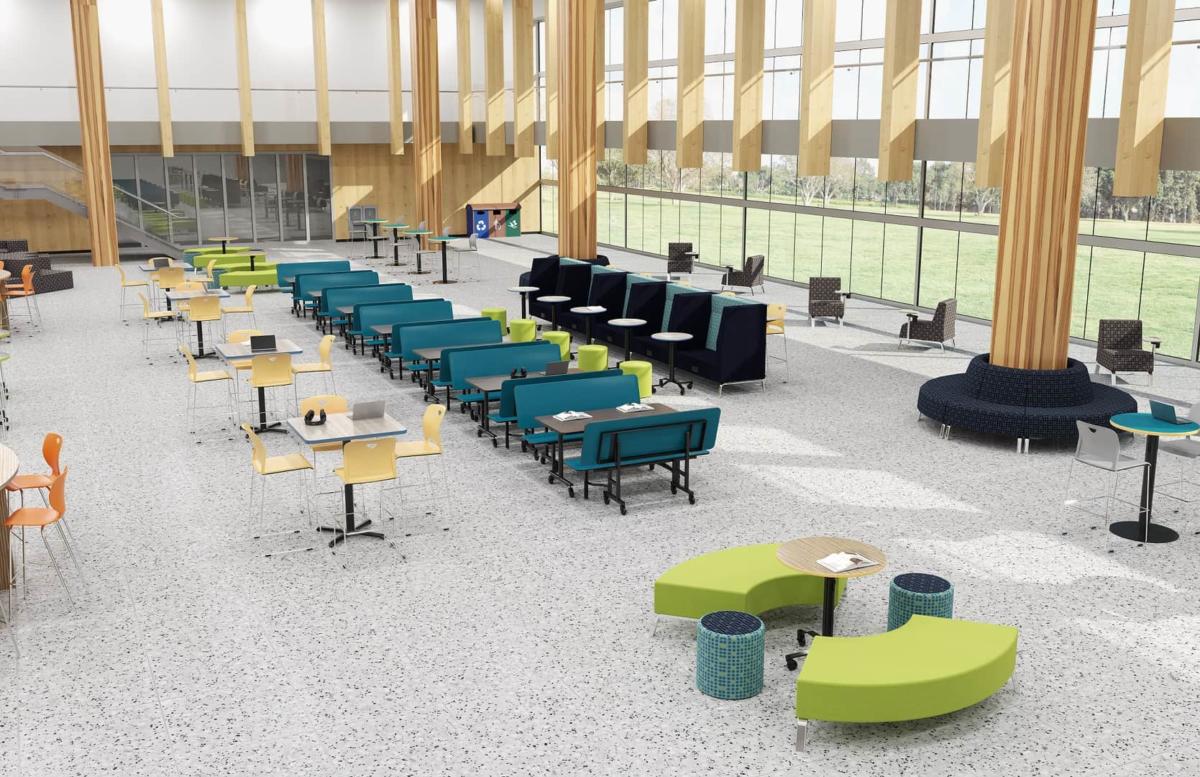
Here are four design ideas to guide you.
Provide a variety of group sizes. “You want to have large group settings for students to sit and eat and also for hosting functions, with tables that can seat 10-12 people,” Gonzalez says. “You should also think about providing smaller, more intimate settings for when students want to sit on their own—as well as tables that can accommodate small groups of 4-6 people.”
Offer a variety of heights. Providing traditional seating as well as taller bistro tables and stools gives students plenty of choices for feeling comfortable. For instance, lightweight NeoClass Sled Base Stacking Chairs are available in 18-inch and 30-inch heights to give students a variety of options. “Eating counters and study counters, something that can span the length of a wall or around a column, are becoming popular as well,” Gonzalez says. “Kids can pull out their laptop and hang out for a while.”
Include comfortable zones. Providing soft seating options, such as lounge-style couches, benches, and booths, creates a space that is more inviting.
Add power wherever possible. If you embed power within countertops or tabletops, then students aren’t tripping on power cords—and they aren’t limited in their choice of where to sit. “Students don’t have to sit near a wall,” Gonzalez explains. “They have more flexibility to sit where they are comfortable.”
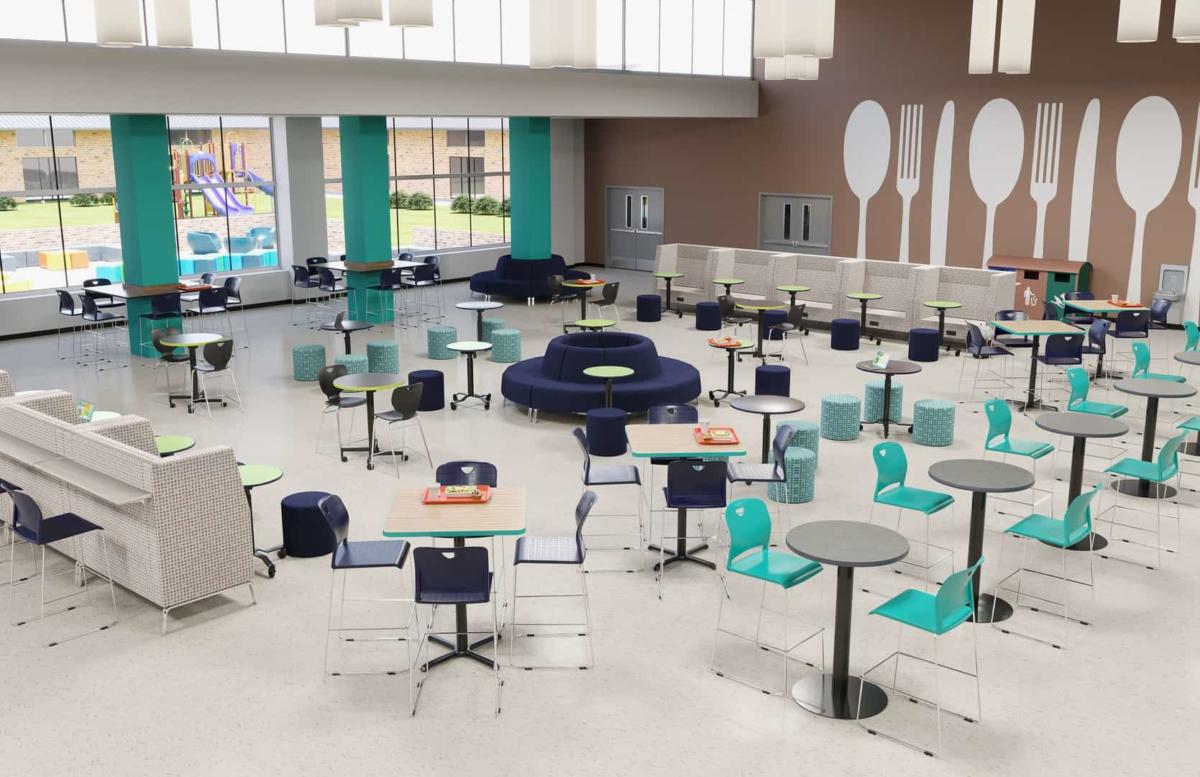
Hallways, Common Areas, and Outdoor Spaces That Engage and Inspire
Assuming they’re large and open enough, hallways and common areas can be useful places for students to stop and reflect on their learning, engage in conversations, or even just check their messages or recharge a device in between periods.
“Providing booths or benches along the wall creates an area for students to stop at on the way to their next class,” Gonzalez says. “Even counters that run along the wall can provide a spot for students to set their phone down and recharge. For instance, KwikBoost charging stations allow students to charge up for five minutes between classes. Having someplace to set their stuff down is very useful.”
Outdoor spaces offer many opportunities to extend learning, and research suggests there are both educational and health-related benefits to learning outdoors. For instance, breathing fresh air can clear students’ minds and help them think by increasing the amount of oxygen their brains receive. Being outside can also reduce stress and improve students’ emotional well-being.
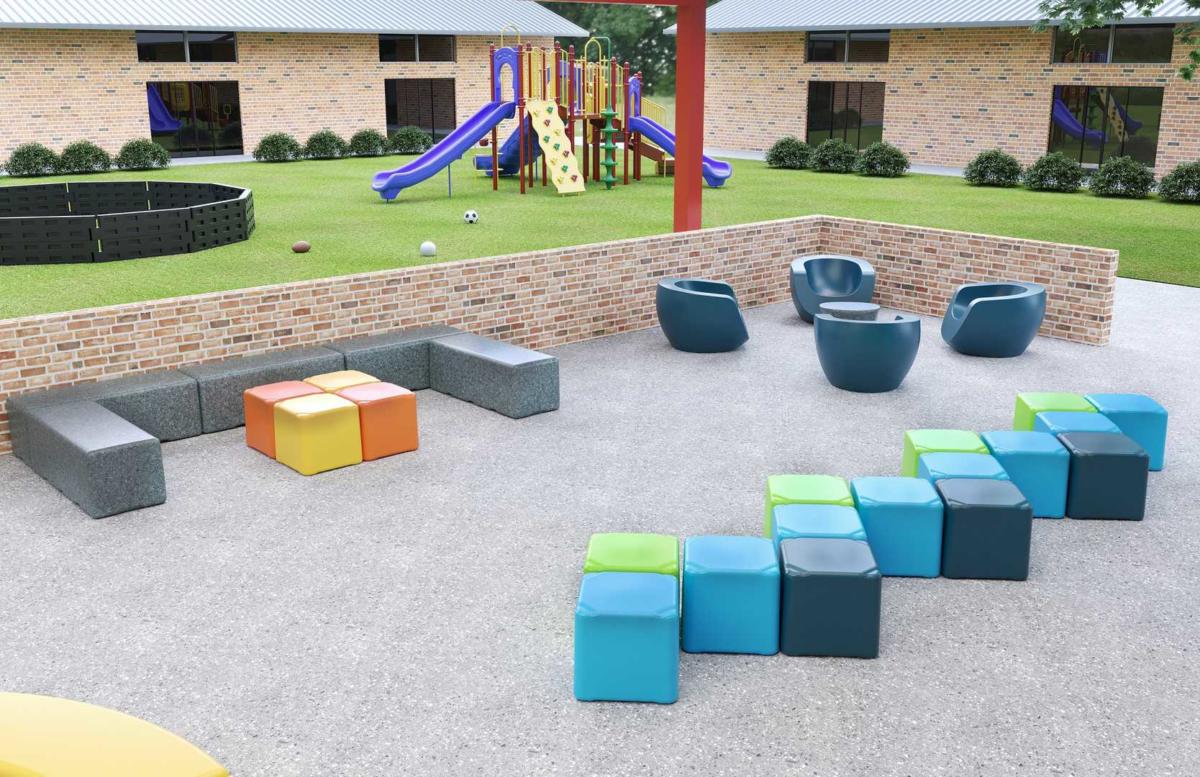
When designing outdoor spaces, it’s important to provide many seating options for different group sizes, just as when designing cafeterias. Use weather-resistant materials that can withstand the elements.
Also, think about mobility: Do you want students to be able to move outdoor tables or furniture? “If not, consider anchoring tables and using attached seating,” Gonzalez recommends.
Look at the Competition
When designing non-instructional spaces that students find inspiring, think about what the “competition” is doing, Gonzalez concludes: “What are you seeing at restaurants? Bistros? Cafés? Those are the places where students are going to hang out. How do we get students to stay longer at school and use school resources for learning, instead of hanging out at these off-campus locations? By designing more boutique-style, fun spaces that feel less institutional.”
To learn how School Specialty can help you design and equip non-instructional spaces that foster school culture and support continuous learning, contact us today.
Download & Share
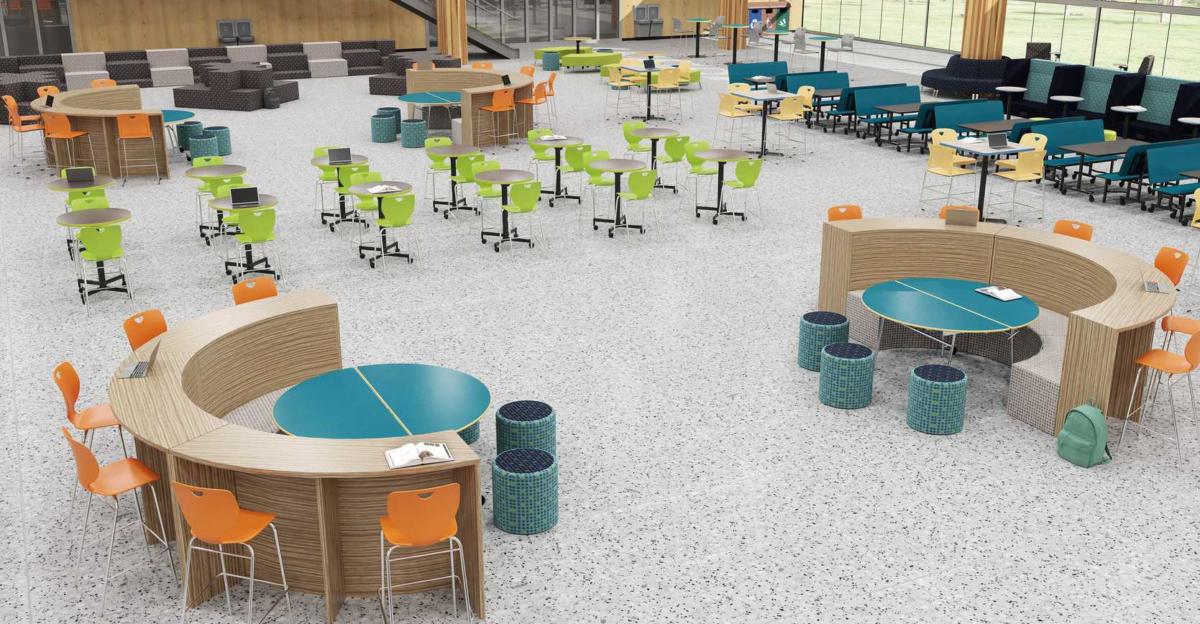

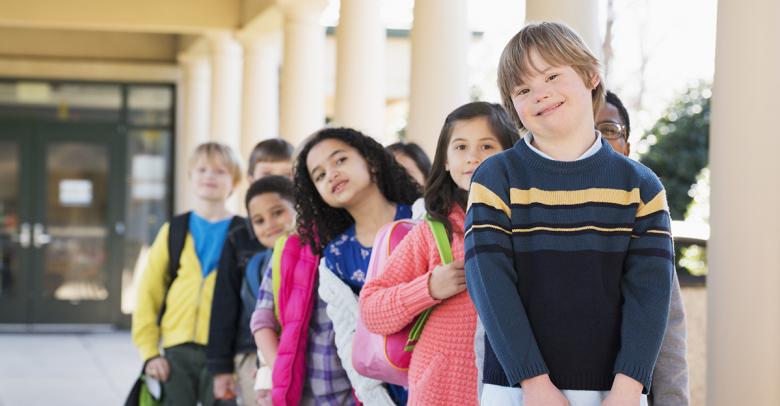
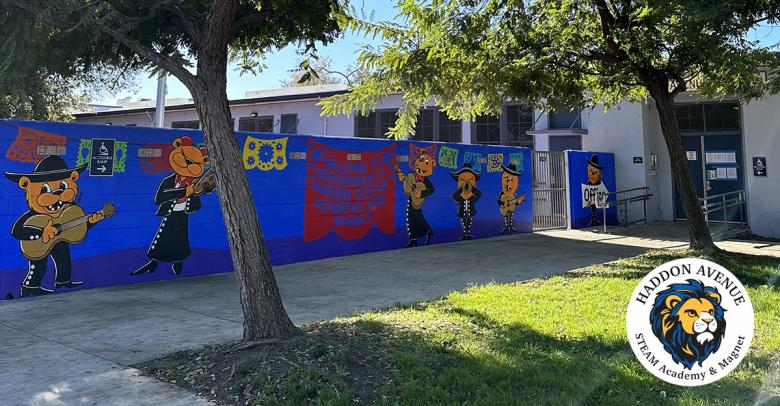
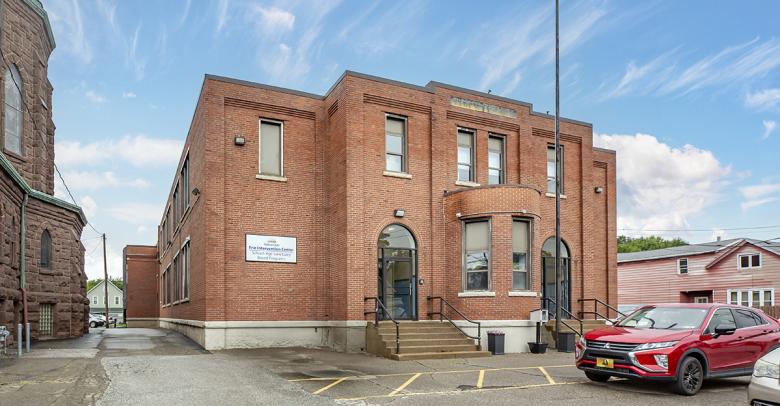
Leave a Reply